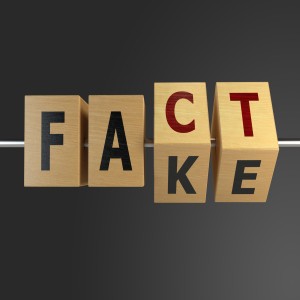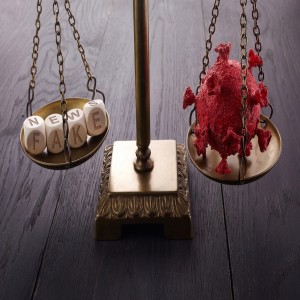The internet has made it easier than ever to do research, find good information on any topic imaginable, and generally develop a better understanding of the world.
However, it’s also made it easier to spread misinformation and falsehoods. Whether deliberately or accidentally, many of the sites on the internet are actively spreading falsehoods. Because of this, separating truth from fiction requires one to remain vigilant at all times.
Fortunately, there are many warning signs that a site you are on might be peddling false information. You just need to know which signs to look when doing research online.
To that end, here are five things to check before trusting the information on a website.
1: The Information is Too Good to Be True
There’s an old adage that says, “If something seems too good to be true, it probably is.” Nowhere is this more true than on the internet.
One of the common ways that misinformation is spread is by taking something that is true and either exaggerating it or removing it from its nuance. This results in claims that are wildly disproportionate to the facts and often feel too good to be true, no matter how much people may want them to be true.
If a site is making massive claims without providing equally compelling evidence, it’s very likely peddling misinformation and it’s worth finding another source.
2: The Writing is Low-Quality
Even the best sources can make a typo or two, but if the writing is filled with glaring errors, random capitalizations, or highly-biased word choices, then it’s definitely a warning sign it’ s a less-than-reliable place to get information.
The reason for this is fairly simple: the writing reflects the care put into the content itself. Low-quality writing is a general warning that the information contained within that writing is also suspect.
If the piece you are reading is filled with such errors or clear biases, it’s best to find a better source. And even if the information does turn out to be accurate, a source with higher quality writing will more successfully support your research or strengthen your argument.
3: The Page Doesn’t Cite Its Sources
As any student knows, citing your sources isn’t just about giving credit, it’s about supporting your paper and letting the reader easily verify what you are saying.
If the site you’re reading doesn’t cite its sources, it’s a definite warning sign that something is amiss. To be clear, sources can come in multiple forms including hyperlinks, quotes from relevant individuals, and references to reputable sources in the text itself. Some may even have full research-style footnotes and in-text citations.
However, if they are all absent, the page and the site should definitely be taken with a grain of salt.
Even if the page does provide sources but those sources are also of low-quality, it is still a red flag that the site may be spreading disinformation, wittingly or unwittingly. Either way, it’ s better to move on.
4: You Found It Through an Unreliable Means
Misinformation is often spread from person to person, which means it has a strong presence on social media. Though search engines can certainly link to questionable pages, social media is still the largest vector for the spreading of false information online.
Links that you found through social media should be treated with suspicion, especially if they weren’t shared by someone who is an expert in the field. However, even links on regular search engines can have issues.
One of the easiest ways to know if a link is questionable or not is through NewsGuard, an independent service that reviews content sources and provides “Nutrition Labels” that highlight issues they may have. Best of all, Turnitin users have the ability to get NewsGuard for free until the end of 2020 with an option to extend that until June 2021.
Combining higher-quality search results with proactive checking of sources contained within can greatly help reduce the time and energy spent on separating legitimate information from falsehoods.
5: You Can’t Verify the Information
As we discussed previously, you should always double-check any information that you find on the internet, even from reputable sources. If you can’t verify the information or the only verification comes from other sources that raise similar red flags, stay away.
Avoid Falling for Fakes
One easy way to try and verify the information is to find the primary source. Use the citations to track down where the information originally came from. Sometimes you’ll find that the sites simply link to one another, creating a feedback loop. Other times there is an original source but it is unreliable, such as a press release or a non-expert.
If you seek out the primary source and investigate it for yourself, it is much harder for you to be led astray. Additionally, if you utilize thoughtful source credibility resources, like Turnitin's Source Credibility Pack, you can further ensure that your information is solid.
All in all, avoiding false information on the internet requires vigilance and that includes mistrusting information that fits your personal ideology. If you find yourself agreeing with something earnestly, check it just as intently as you would something you disagreed with.
If you do that, you’ve made a major first step at keeping misinformation at bay.
Interested in learning more about academic integrity in K12 and the relationship between an academic institution, its students, and student coursework?
Join us on Wednesday, July 15, 2020, as we take part in a panel that brings together policymakers, school administrators, classroom teachers, and thought leaders. Together, we'll explore the vocabularies of academic integrity and equity, explore structural challenges, and identify opportunities for action.
What: The intersection of Academic Integrity and Equity in Secondary Education - Panel and Discussion
When: Wednesday, 15 July 2020 15:00 ET






